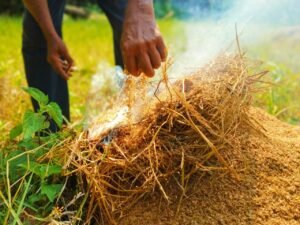
Indigenous rice varieties have been an integral part of the traditional foodways of many cultures for centuries. These heirloom varieties are not only important for cultural and culinary reasons, but they also offer significant health benefits. At Twenty Arms, we are committed to preserving these traditional foodways by promoting the use of indigenous rice varieties, particularly those from Sri Lanka. In this blog post, we will explore the health benefits of these unique rice varieties, why they need to be protected, and how they help the environment.
Indigenous rice varieties are often referred to as “heirloom” or “heritage” rice. These varieties have been cultivated for generations by farmers using traditional methods, and they have not been genetically modified or bred for industrial agriculture. One of the primary benefits of these rice varieties is their high nutritional value. Many indigenous rice varieties, including those from Sri Lanka, are rich in vitamins, minerals, and antioxidants that are important for maintaining good health.
In addition to their nutritional value, indigenous rice varieties from Sri Lanka have been used for medicinal purposes for centuries. These rice varieties have been shown to have anti-inflammatory and anti-cancer properties, and they have been used to treat a variety of ailments, including diabetes, heart disease, and digestive disorders. At Twenty Arms, we are committed to promoting the health benefits of these unique rice varieties and making them more accessible to consumers.
Heirloom rice from Sri Lanka is known for its unique flavor, aroma, and texture, as well as for its cultural and historical significance. The rice is grown in harmony with nature, without the use of synthetic pesticides or fertilizers. This not only preserves the biodiversity of the region but also produces a high-quality crop that is both healthy and delicious.
However, these indigenous rice varieties are also in danger of being lost to industrial agriculture practices. As large-scale farming operations have taken over, many farmers have abandoned traditional methods in favor of higher-yielding, genetically modified varieties. This has led to the loss of many indigenous rice varieties, along with the cultural and culinary traditions associated with them.

A farmer begins the process of preparing the soil for planting by starting a fire in the rice husk. The ash from the husk is then returned to the soil to promote fertility and promote sustainable agriculture practices.
At Twenty Arms, we are working to protect these important rice varieties by promoting their use and supporting farmers who use traditional methods to cultivate them. By doing so, we are helping to preserve not only these unique rice varieties but also the cultural and culinary traditions that go along with them.
Another important benefit of promoting the use of indigenous rice varieties is their positive impact on the environment. Unlike industrial agriculture, which often relies on harmful chemicals and large amounts of water, traditional rice cultivation methods are more sustainable and environmentally friendly. Traditional methods prioritize soil health, biodiversity, and water conservation, which helps to preserve the environment and promote ecological stability.
In conclusion, cooking with Heirloom rice varieties from Sri Lanka is not only delicious but also offers significant health benefits. These unique rice varieties are rich in nutrients, have medicinal properties, and promote sustainable agriculture practices. At Twenty Arms, we are committed to promoting the use of indigenous rice varieties and preserving traditional foodways. By doing so, we are helping to protect the environment, promote public health, and preserve cultural and culinary traditions for generations to come.
